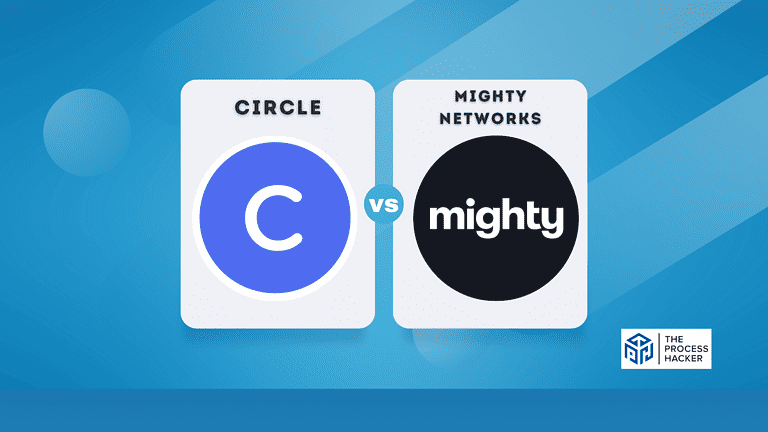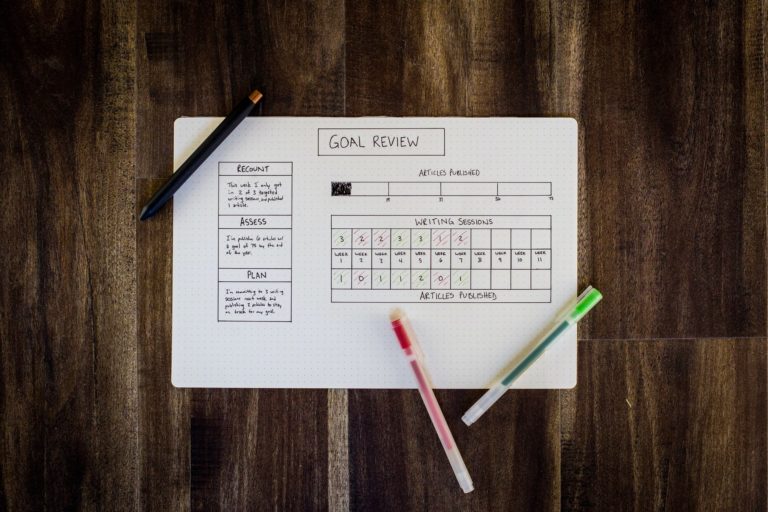Big Rocks: Setting Quarterly Goals for Business
“If the big rocks don’t go in first, they aren’t going to fit in later.”
Stephen Covey, author of The 7 Habits of Highly Effective People
Have you ever felt like you’re constantly chasing your tail without making much meaningful progress?
In business, we often focus so much on checking off to-dos and putting out fires that we lose sight of actually moving the needle on what really matters: our family. But what if I told you that with just a little strategic planning each quarter, you could significantly impact your bottom line, all while actually feeling less overwhelmed?
In this post, I’ll share how focusing on a few “big rocks” each quarter has helped my business grow in leaps and bounds compared to incremental changes. I’ll also share some tips and tricks I’ve learned along the way to help you get started implementing this approach.
Welcome to crushing your quarterly goals – you’ll love the results and what it does to reduce stress, too. Let’s dive in!
What are Big Rocks?
In business, big rocks are your three to seven more critical priorities or goals to get done in the next quarter. Everyone and everything should have them. The company should have company-wide priorities, which are codified in the vision.
Each department should have departmental goals. And all of your people should have their own individual goals.
To get you and your people to focus on what is essential, the number of big rocks has to be limited. Thus, you need to restrict them to three to seven to focus and get more things done. Individual employees should be further limited to one to three to get them to focus on a few priorities more intensely.
Origin of the Big Rock Concept
In the book, First Things First, Stephen Covey describes the concept of Big Rocks to represent your most important priorities. First, he starts with the Eisenhower Matrix, which is a method for prioritizing important, long-term work over unimportant, urgent stuff.
You need to determine the few important priorities to progress on your most important goals and maintain a balanced life. He illustrates this concept using a story that encourages individuals to “place the big rocks first.”
First, Stephen Covey tells us to imagine a glass jar on your desk in which the empty space represents the time you have to manage. Next to the jar are rocks, little rocks (gravel), sand, and a glass of water. These items represent all the stuff that you have to get done:
- The big rocks represent your main priorities or longer-term goals.
- The little rocks represent your day-to-day responsibilities and shorter-term goals.
- The sand represents minor tasks that are not important.
- The water represents the unimportant distractions that prevent you from getting work done.
Suppose you started with the urgent, unimportant stuff and then tried to fit in the longer-term, essential priorities. First, you dump the water and let the distractions get to you.
Next, you fill in the sand and try to work on the minor tasks. After, you squeeze in the gravel or the day-to-day work. When you get to the big rocks or your most important priorities, you can’t fit them into your day.
It gets progressively harder to manage your time in this order of importance. Thus, Stephen Covey says to start with the big rocks and then add the gravel, sand, and water, respectively. Then, all of the things will fit into the glass jar or your day.
This Big Rocks story teaches us that we need to focus on fewer, higher-level goals to get more done. If we get stuck in the details, then the significant priorities will not get worked on.
How to Set SMART Goals
You should establish big rocks using the SMART Goals (Specific, Measurable, Actionable, Relevant, and Time-bound) framework to help provide clarity and set expectations to get work done:
Specific
A Specific Rock helps you get moving immediately on what you want to accomplish. Do you know what you need to do to start working on the Rock?
Measurable
A Measurable Rock helps you monitor and determine whether you are done or not done. Can you quantitatively measure the progress toward completing the Rock?
Actionable
An Actionable Rock helps you take bold, consistent action. Do you know what actions you need to take to accomplish the Rock?
Realistic
A Realistic Rock is something that one can accomplish within a specific period. Can you achieve the Rock in 90 days with the resources you have available?
Timebound
A Timebound Rock has a specific deadline for completion. Do you have a clear timeline in place to complete the Rock within 90 days?
When you fail to accomplish a big rock, it is most likely because you didn’t use the SMART framework. Don’t get hard on yourself. Instead, figure out why you failed and what was missing from the SMART framework, and restart the goal in a future quarter.
How to Set Big Rocks within Your Organization
#1) Review Your Vision and Brainstorm All Possible Goals
Review your corporate vision, and list out everything you want to accomplish in the next quarter. Do not filter yourself, as this will result in about 10 to 20 goals in total.
#2) Prioritize the 3-7 Most Important Big Rocks
Discuss within the leadership team or departmental levels the specific needs of the business and the customers and which big rocks are the most important to work on in the next quarter. Next, you and your team must combine, eliminate, delay, or decide as necessary to narrow the list down to three to seven.
#3) Frame Them as SMART Big Rocks
Frame the objectives as SMART (Simple, Measurable, Actionable, Realistic, and Timebound) goals. Each one should have assigned due dates, which will probably occur at the end of 90 days.
#4) Assign Big Rocks to a Responsible Individual
Assign each big rock to an individual within the team. This individual will be responsible for completion by the end of the quarter and should be held accountable by the rest of the team.
#5) Document All of Your Big Rocks
Create a document containing the company’s and each department’s goals. This sheet should be accessible to everyone to help create accountability and discipline within your teams.
#6) Communicate Your Rocks to the Company
Hold a company-wide quarterly meeting for the leadership team to communicate the big rocks to everyone. This will provide transparency to everyone as to what was accomplished last quarter and where the company is going in the coming quarters.
#7) Set 1-3 Big Rocks for Every Employee
Now that goals have been assigned for the company as a whole and each department, everyone should set their one to three most important priorities for the quarter. For the company to gain traction toward the vision, everyone in the organization needs to have big rocks.
#8) Hold Weekly Meetings to Hold Everyone Accountable
Hold your people accountable for their goals during weekly meetings. The meeting pulse involves holding reoccurring meetings to gain traction. These meetings provoke your people to take action on their priorities as most people tend to procrastinate on work.
Key Considerations for Big Rocks
Setting the wrong goals will move the company in the wrong direction. Going in the wrong direction is a waste of your most precious resources in the world, precisely time and money. Thus, spending time establishing SMART goals is essential to gain traction on the priorities.
It takes about a few quarters to become proficient in setting great goals. Anything that you get good at requires practice and experience. Thus, the art of establishing priorities improves with action over time.
Commit purposefully to accomplishing your big rocks. You want to invest so strongly that you take consistent action on your priorities for the entire quarter. If you don’t commit, you may lose motivation and give up easily.
Don’t set too many big rocks, as less is more. We overestimate what we can accomplish in a quarter and underestimate what we can do in 10 years. Fewer priorities will help you focus and finish instead of becoming overwhelmed and losing motivation.’
Each quarter is an opportunity to do a slight reset and establish new goals for you, your company, and your people. Big rocks are powerful tools for gaining traction on the corporate vision and moving forward. Your people will be more engaged with their priorities, held accountable, and get more done in the process.
Final Thoughts on All the Big Rocks
Setting quarterly goals for your business is like strategically placing the big rocks in a jar of sand. It may seem tedious and time-consuming, but trust me when I say that the result will be worth it.
By prioritizing and focusing on your biggest goals first, everything else will naturally fall into place. Remember to break down those big rocks into smaller, more manageable tasks, and don’t forget to celebrate even the smallest victories along the way.
As business owners, it’s easy to get lost in the hustle and bustle of everyday tasks but don’t let that distract you from looking at the bigger picture and keeping your eye on the prize.
And if something doesn’t go according to plan, don’t fret – just adjust your sails and keep moving forward towards those big rock goals. As cheesy as it may sound, remember that Rome wasn’t built in a day, and neither will your business success be achieved overnight.
So keep setting those quarterly goals and watch your business grow by leaps and bounds! Cheers to setting big rock goals and making them a reality!










